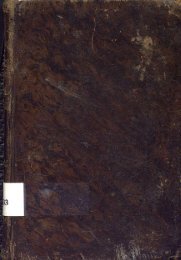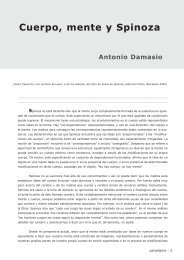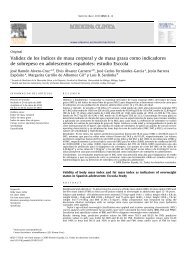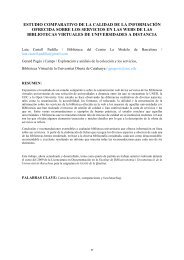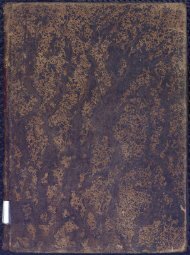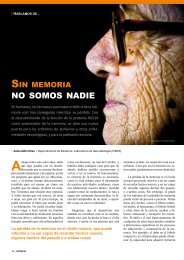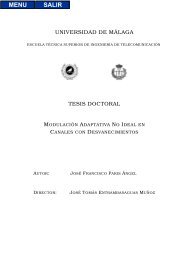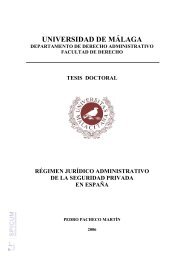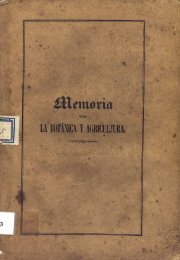Papel de las actividades superóxido dismutasa y catalasa en la ...
Papel de las actividades superóxido dismutasa y catalasa en la ...
Papel de las actividades superóxido dismutasa y catalasa en la ...
You also want an ePaper? Increase the reach of your titles
YUMPU automatically turns print PDFs into web optimized ePapers that Google loves.
INTRODUCTION<br />
increase their bactericidal activity, oxyg<strong>en</strong> <strong>de</strong>p<strong>en</strong><strong>de</strong>nt and in<strong>de</strong>p<strong>en</strong><strong>de</strong>nt mechanisms<br />
being involved (Siwicki et al., 1994; An<strong>de</strong>rson, 1996).<br />
Immunostimu<strong>la</strong>nts may be able to comp<strong>en</strong>sate some chemotherapeutic and vaccine<br />
limitations. Immunostimu<strong>la</strong>nts are safer than chemotherapeutics and their range of<br />
efficacy is wi<strong>de</strong>r than vaccination. However, we cannot expect the marked or long-term<br />
effects observed with vaccines to occur with immunostimu<strong>la</strong>nts because these<br />
substances act on non-specific immune system, without a memory compon<strong>en</strong>t<br />
(An<strong>de</strong>rson, 1996; Sakai, 1999). Sakai (1999) suggests that the most effective strategy to<br />
prev<strong>en</strong>t and combate possible infectious diseases in fish, is the combination of<br />
immuostimu<strong>la</strong>nts and vaccines. Thus, with a <strong>de</strong>tailed un<strong>de</strong>rstanding of the efficacy and<br />
limitations of immunostimu<strong>la</strong>nts, they may become powerful tools to control fish<br />
diseases.<br />
4.3. USE OF ALGAE AS IMMUNOSTIMULANTS<br />
During <strong><strong>la</strong>s</strong>t years searching for therapeutically active substances has focused on<br />
marine organisms. Ability of algae to produce secondary metabolites, such as<br />
antibiotics, antivirals, antitumorals and antiinf<strong>la</strong>mmatories, with pot<strong>en</strong>tial<br />
pharmaceutical interest, has be<strong>en</strong> well docum<strong>en</strong>ted (Scheuer, 1990; Faulkner, 1993;<br />
González <strong>de</strong>l Val et al., 2001). However, studies on immunomodu<strong>la</strong>tory properties of<br />
extracts and whole cells from algae are still scarce. In this Thesis we have studied the<br />
red microalga Porphyridium cru<strong>en</strong>tum as a possible source of immunostimu<strong>la</strong>nts in<br />
cultured sole.<br />
A great number of algae constitute an important source of polyunsaturated fatty<br />
acids (PUFAs), which are the ess<strong>en</strong>tial dietary requirem<strong>en</strong>ts for many marine teleosts<br />
(Bell et al., 1985; Kov<strong>en</strong> et al., 2001). Some of these fatty acids, such as the arachidonic<br />
acid, AA (20:4(n-6)) participate in eicosanoid synthesis, therefore, in prostag<strong>la</strong>ndin<br />
production, involved in stress through modu<strong>la</strong>tion of cortisol release and, therefore in<br />
cellu<strong>la</strong>r immunity (Vil<strong>la</strong>lta et al., 2005).<br />
Algae also contain carot<strong>en</strong>oids, β-carot<strong>en</strong>e, astaxanthin, cataxanthin or<br />
xanthofilins. Amar et al. (2004) <strong>de</strong>monstrated that β-carot<strong>en</strong>e, iso<strong>la</strong>ted from Dunaliel<strong>la</strong><br />
81



